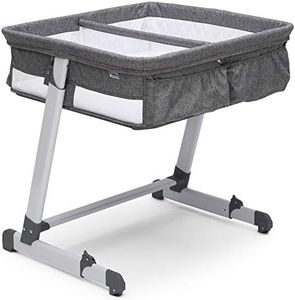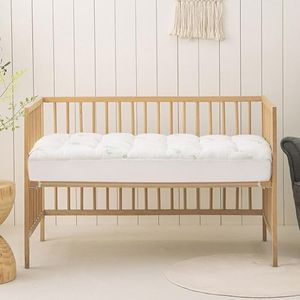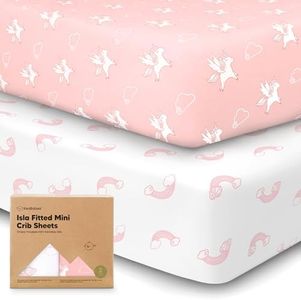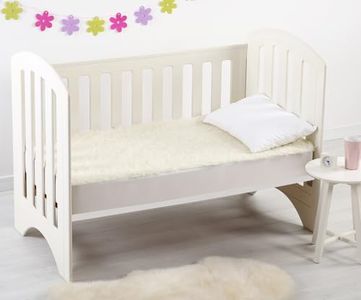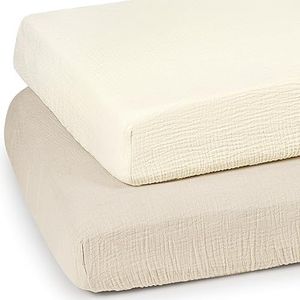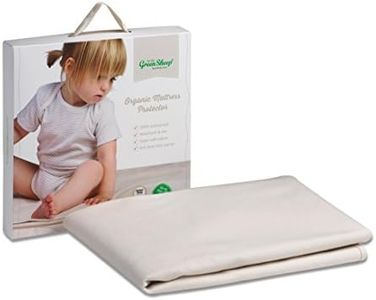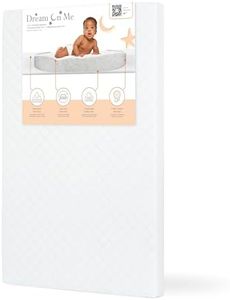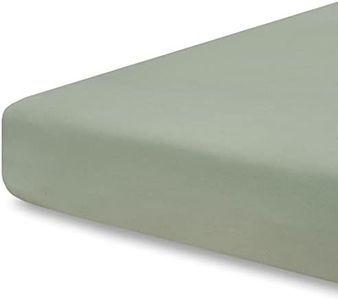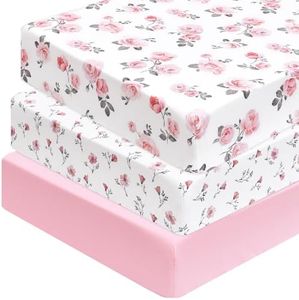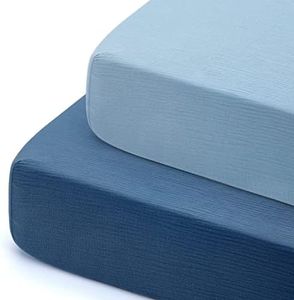We Use CookiesWe use cookies to enhance the security, performance,
functionality and for analytical and promotional activities. By continuing to browse this site you
are agreeing to our privacy policy
10 Best cribs
From leading brands and best sellers available on the web.By clicking on a link to a third party's website, log data is shared with that third party.
Buying Guide for the Best cribs
Choosing a crib for your baby is one of the most important purchases you'll make as a parent. A crib needs to be safe, comfortable, and suitable for your baby's changing needs. As you consider your choices, think about the space in your home, how long you want the crib to last, and what features will make your everyday routine easier. Always make sure the crib meets current safety standards, and take time to understand which features fit your lifestyle before making a decision.Size and DimensionsThe size and dimensions of a crib refer to how much space the crib will take up in your room and how much room your baby will have to move around. A full-size crib offers ample space for your baby to grow, while a mini crib suits smaller spaces or can be convenient for travel or grandparents' homes. Standard-sized cribs usually measure about 28 by 52 inches, while mini cribs are typically smaller. Think about the room where you'll be placing the crib and how long you plan to use it. If you have a small nursery or need the crib to fit in your bedroom, a mini crib might be a good choice, while a full-size crib is better for long-term use.
Adjustable Mattress HeightsAdjustable mattress heights allow you to raise or lower the mattress as your baby grows. Higher positions make it easier to lift a newborn in and out of the crib, while lower positions keep older, more mobile babies safe from climbing out. Most cribs offer two or three height options. For the first few months, you can use the highest setting for convenience, but as your baby begins to sit or stand, you'll need a lower setting for safety. If you want a crib that adapts to your child’s development, look for multiple mattress height levels.
Convertible FeaturesConvertible cribs can transform into toddler beds, daybeds, or even full-size beds as your child grows. This feature extends the usefulness of the crib beyond infancy, making it a long-term sleep solution. Some cribs convert with just a few adjustments while others may need extra conversion kits. If you value longevity and want to invest in a crib that will serve multiple stages of childhood, a convertible crib can be a smart choice. Think about the future and whether you want a piece of furniture that ‘grows’ with your child.
Slat Spacing and Safety StandardsSlat spacing and safety standards refer to how close the slats are and how well the crib is built to prevent accidents. Slats should be no more than 2 3/8 inches apart to ensure your baby’s head or limbs don’t get stuck. Look for cribs that are certified by recognized safety organizations; these will comply with strict testing for structure, lead-free paints, and sturdy hardware. Safety is always the top priority, so choose a crib that clearly meets up-to-date safety requirements, especially if you’re considering a hand-me-down or second-hand piece.
Ease of Assembly and MaintenanceEase of assembly is about how straightforward it is to put the crib together, and maintenance considers how easy the crib is to keep clean and sturdy over time. Some cribs have clear instructions and need only simple tools, while others might be more complicated or require extra help. Features like removable mattress supports and easy-to-wipe surfaces can make cleaning easier. If you’re not comfortable with complex assembly or will need to move or adjust the crib often, choose a design known for easy set up and care.
Material and FinishThe material and finish of a crib determine its durability, appearance, and safety. Most cribs are made from solid wood, engineered wood, or metal, with a range of finishes. Solid hardwood tends to last longer, while engineered wood can be more affordable. Non-toxic, lead-free finishes are crucial since your baby may lick or chew the crib at some stage. Consider both the practicality and look of the crib—choose a material and finish that matches your home, is easy to maintain, and prioritizes child safety.
